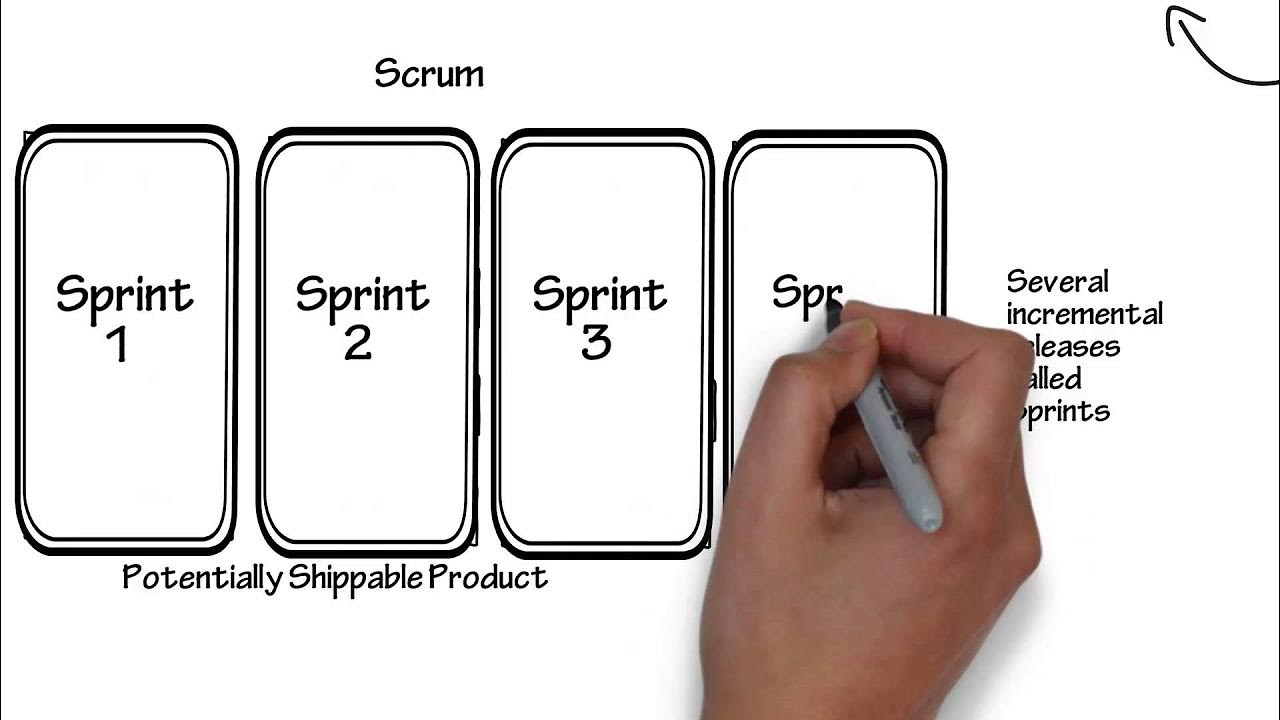Introduction to Scrum - 7 Minutes
null

Click
Use
to move to a smaller summary and to move to a larger one
Introduction to Scrum: A Quick Primer
- Scrum is a framework for project management and development.
- Scrum follows an agile approach, breaking the process into smaller pieces.
- Scrum is compared to the traditional Waterfall development method.
- Waterfall involves lengthy planning, building, testing, and deployment stages.
- Issues with Waterfall include lack of flexibility and potential for wrong products.
- Scrum involves shorter planning, development, and testing cycles called Sprints.
- Each Sprint results in a potentially shippable product increment.
- Scrum uses three key roles: Product Owner, Scrum Master, and the development team.
- The Product Owner defines the features needed in the product.
- The Scrum Master is responsible for running meetings and ensuring the process runs smoothly.
- The development team consists of various members who work together to build the product.
- Scrum utilizes three artifacts: Product Backlog, Sprint Backlog, and Burn Down Charts.
- The Product Backlog is a prioritized list of features known as user stories.
- User stories follow the format of "As a user, I need something so that reason."
- User stories help estimate the size of tasks and determine Sprint Backlog items.
- The highest priority user stories are committed to for the next Sprint.
- Burn Down Charts track the progress of a Sprint.
Overview of Scrum Workflow and Ceremonies
- Scrum consists of three ceremonies: Sprint planning, daily scrum, and Sprint review/retrospective.
- Sprint planning involves discussions and estimation of user stories.
- Daily scrum is a brief standup meeting where team members discuss completed tasks, work in progress, and any obstacles.
- Sprint review and retrospective occur at the end of the Sprint, where completed work is demonstrated and improvements for the next Sprint are discussed.
- The workflow begins with the product backlog, where the product owner prioritizes and selects top items.
- Sprint planning results in the Sprint backlog, a list of committed user stories for the next Sprint.
- The Sprint is a time-boxed period for working on the committed backlog items.
Overview of Scrum Framework and its Components
- Scrum is a project management and development framework.
- It follows an agile approach and breaks the process into smaller pieces.
- Scrum is compared to the traditional Waterfall development method.
- Waterfall involves lengthy planning, building, testing, and deployment stages.
- Scrum involves shorter planning, development, and testing cycles called Sprints.
- Each Sprint results in a potentially shippable product increment.
- Scrum uses three key roles: Product Owner, Scrum Master, and the development team.
- The Product Owner defines the features needed in the product.